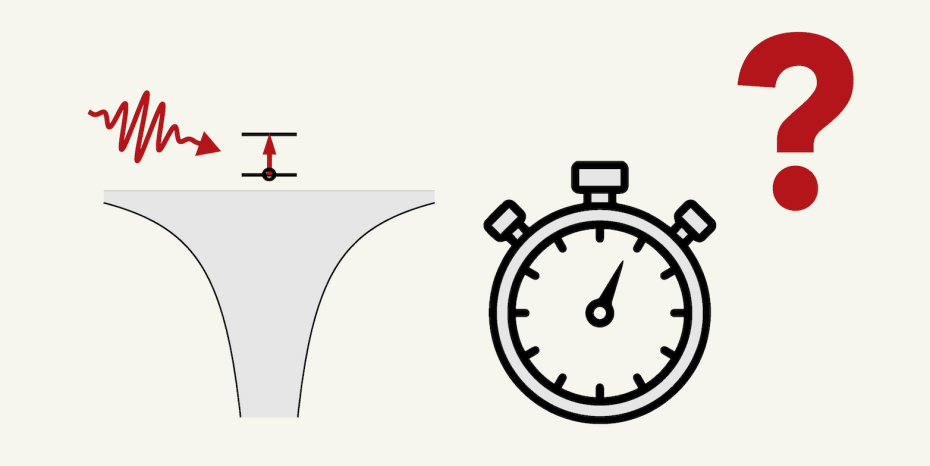Mar 23 2020
One of the exemplary effects of quantum mechanics is the photoelectric effect, in which electrons are emitted when photons impinge on matter.
 How large are the time delays from one-photon transitions in the continuum? The group of Ursula Keller has now measured, for the first time, these slight changes in dynamics. Image Credit: ETH Zurich/D-PHYS, Jaco Fuchs/Sara Hartmann.
How large are the time delays from one-photon transitions in the continuum? The group of Ursula Keller has now measured, for the first time, these slight changes in dynamics. Image Credit: ETH Zurich/D-PHYS, Jaco Fuchs/Sara Hartmann.
The major mechanism fundamental to the phenomenon was eminently described by Einstein in 1905 which fetched him the Nobel Prize in Physics in 1921. Einstein built on a concept that was introduced by Max Planck only five years earlier—that is, absorption and emission of electromagnetic energy occur only in discrete packets—specifically, in quanta.
Physics has been redefined by the quantum concept. The photoelectric effect, for its role, has been analyzed in much greater detail, and currently employed in applications that range from night-vision goggles to solar cells. The past 10 years or so witnessed a shift in one’s understanding relating to the photoelectric effect.
Laser experiments enabled direct observations of the complex quantum dynamics that emerge at the attosecond timescale as electrons are eliminated from their parent system upon interacting with light.
But time-resolved measurements of the photoionization procedure in its dubiously purest form—the emission and absorption of single photons by one, untethered electron—continued to be elusive, until now.
In association with colleagues in Spain, Austria, and the United States, Jaco Fuchs and collaborators in the Ultrafast Laser Physics group of Professor Ursula Keller at the Institute of Quantum Electronics have reported an experiment that sheds light on the dynamics of electrons. The study was described in the Optica journal.
For the first time, the researchers measured how the emission and absorption of a single photon change the dynamics of a single electron that is not bound to an atomic nucleus but continues to feel its Coulomb potential.
Introducing an innovative experimental process, the researchers discovered that the angular momentum of the photoionized electrons decides their dynamics—the team quantified a delay of around 12 attoseconds between outgoing d-electrons and s-electrons present in helium. This signature of fundamental quantum-mechanical effects is subtle but distinctive.
The researchers also visualized the underlying phenomena of traditional origin: they quantified the phase variations that showed that the outward propagation in d-electrons is slower when compared to that in s-electrons. This phenomenon can be elucidated by the bigger fraction of rotational energy and thus a lower radial energy in the case of d-electrons.
Extracting the Contribution of Single Photons
Such outcomes highlight several “firsts.” Numerous fields of attoscience, such as the quantification of attosecond time delays in photoionization, were pioneered by the Keller group. Such delays emerge when photo-stimulated electrons propagate in the potential of the parent ion, leading to a quantifiable group delay.
The quantification of such attosecond-scale time delays usually involves a minimum of two photons, rendering it quite hard to obtain the contribution of single photons. Fuchs and the team identified a new method to do just that.
Two photons were also involved in the study by Fuchs et al.—one photon in the infrared (IR) range and the other in the extreme ultraviolet (XUV). But the researchers developed a suitable process that allowed them to acquire the amplitudes as well as the relative phases of all the quantum pathways from their high-quality data. Photoionization proceeds in the system only through these quantum pathways.
In this manner, the researchers successfully isolated the varying contributions of the IR photons, which are the ones that promote transitions in an untethered electron (while the photons in the XUV range ionize the atom, by relaying a single electron from a bound state to the continuum).
Direct Measurement of Delays Arising from Bremsstrahlung
For the first time, the ETH physicists gained access to time delays from any transition of single photons. Theirs are also the primary measurements of such time delays for the emission and absorption of photons by untethered electrons—a phenomenon called (inverse) Bremsstrahlung.
The experimental outcomes were suitably recreated by two separate theoretical techniques used by Fuchs and collaborators. Moreover, such simulations offer proof that a few of the visualized effects are universal, in a sense that they are not dependent on the atomic species of the parent ion.
The study also shows that even after 115 years of Einstein’s seminal work, the photoelectric effect continues to inspire. Fuchs and co-workers introduced the tools that offer the modern experimental capabilities for analyzing photoionization dynamics, in atoms as well as in minuscule molecules.
Similar studies could consequently offer a deeper understanding of photoemission time delays, specifically when there are interactions in the intermediate-to-long range.